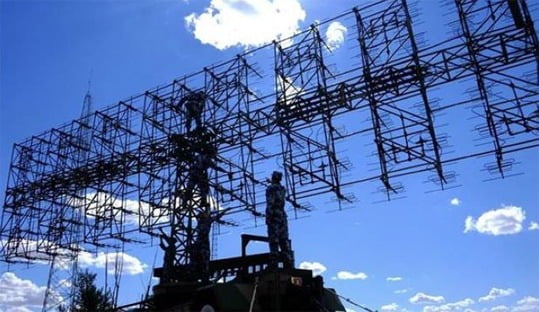
It was bound to happen. Rumors—and credible reports—had been flashing up here and there for quite some time. Finally it was made official: the Chinese technoscientific corpus has found a way to detect “invisible” (stealth) aircraft with pinpoint accuracy! A miracle? Fake news? Neither of the two.
Those of you who remember high-school physics will recall that radio waves (the kind radars use) are classified—depending on their frequency and the length of a full oscillation—into “long”, “medium”, “short” and “ultrashort”. The last of these are better known as FM. Every wavelength in this list has its pros and cons. Historically, the very first radars ever built, during World War II (by the British, if we’re not mistaken), used “long” radio waves. Gradually, every frequency / wavelength for various applications was abandoned in favour of the ultrashort (or the even more ultrashort).
They have several advantages. They are the fastest in transmission, are accurate in targeting, and are therefore considered ideal for conveying information. (They also have disadvantages for some uses: they travel only in straight lines, so there must be no physical obstacles in their path. That’s why FM stations need many repeaters in high places, unlike stations that broadcast in the “long wave” bands. But the latter do not escape noise, interference, are monophonic – i.e. “poor in information” – etc.)
Stealth technology was developed in a techno-warfare environment with high-frequency radar radio waves, because these are what are now in use. Extremely expensive coating materials for flying war machines were researched and manufactured in order to partly absorb waves of such frequencies; shapes were researched and designed so that a portion of the high-frequency radar radio waves would not be reflected correctly and would not return as usable information. Even that part of the waves that does return, in any case, would not be enough to form an accurate picture of what is involved. Is it a bird? Is it a flock of birds? Or is it “invisible” warplanes? The limited “signature” on radar that can cause confusion is the advantage of “invisible” technology. Nothing disappears; a “crisis of identification” is simply crafted.
It remained well known that old-fashioned long waves can detect anything; though not with high accuracy in pinpointing its location. Their other drawback was the low speed of transmission and return after reflection; and the resulting relative fuzziness of the coordinates – for today’s requirements. Given the speed of modern military assets (often supersonic), detection alone is not enough. It must be timely and accurate. In other words, extremely fast. So there was this technical challenge: how could radio waves of different frequencies be transmitted simultaneously, and the “information” of the long waves be carried back to the base by ultra-short ones. A reliable “information coupling” between waves of different frequencies had to be invented…
According to American technologists, such a coupling was impossible. They slept soundly. Until recently, they began to have nightmares: Chinese technologists announced that they had solved the problem. They achieved composite transmission, with radio waves of different frequencies, where the high-frequency waves “observe,” “spy on” the behavior (the shaping) of the low-frequency waves as they are reflected off a target, and swiftly carry this data back. The data does not concern the target itself, but the characteristics of the “sibling” long waves as they are reflected off it. Complex algorithms back at base instantly analyze this data, “translate it into a target,” and provide the coordinates, trajectory, speed, and characteristics of the target quickly enough for a missile to strike it… Stealth; The End!
It is a fact that Moscow has developed the same (or similar) technology. It hasn’t shouted about it, perhaps because it wants to retain the luxury of a very unpleasant surprise for the American “invisibles.” The U.S. federal budget has spent billions of dollars advancing stealth technology—even though it was known that it does not work against “long-wave” systems. Quite simply, like true Western first-worlders, the technologists of Washington’s military–industrial complex considered (for example…) unthinkable that the know-how of the Australian Aborigines’ boomerangs is anything other than completely obsolete. The same went for “long” waves in their eyes. So obsolete that working on them would be a waste of effort…
Long-wave transmission antennas are large (long or, to save space, “folded”), and from that point of view they are easy to strike preemptively. Unless they cannot be seen: imagine that a wave of this kind can be emitted from a wire many kilometres long, which incidentally is also a high-voltage power-line conductor; its exact location cannot be pinpointed if it does not look like a distinct installation.
There is a lesson of broader political significance. Don’t say “I didn’t see it.” Don’t say “I didn’t understand it.” Don’t say “I was taken by surprise.” Say “I didn’t bother to have the means to see it – to understand it – to expect it.”
Whoever works systematically and laboriously with their perception “sees” in good time. Whoever is lazy and sinks into their certainties, consuming them, simply goes blind… It is comfortable, it is effortless, it is relaxed… But only until the excuses run out.
(photo: No, this is not the key to stealth. It’s a Chinese radar, but an intermediate phase…)
